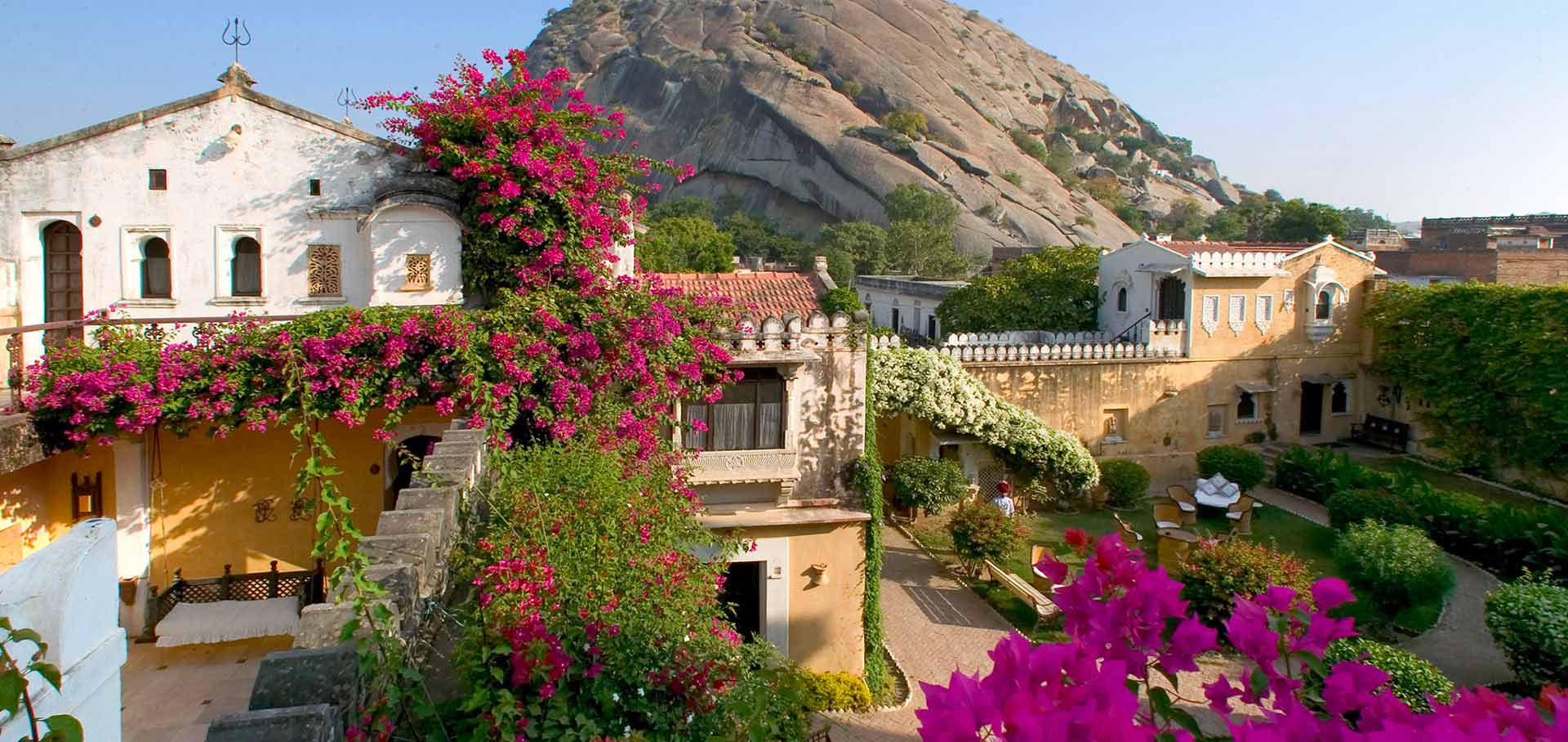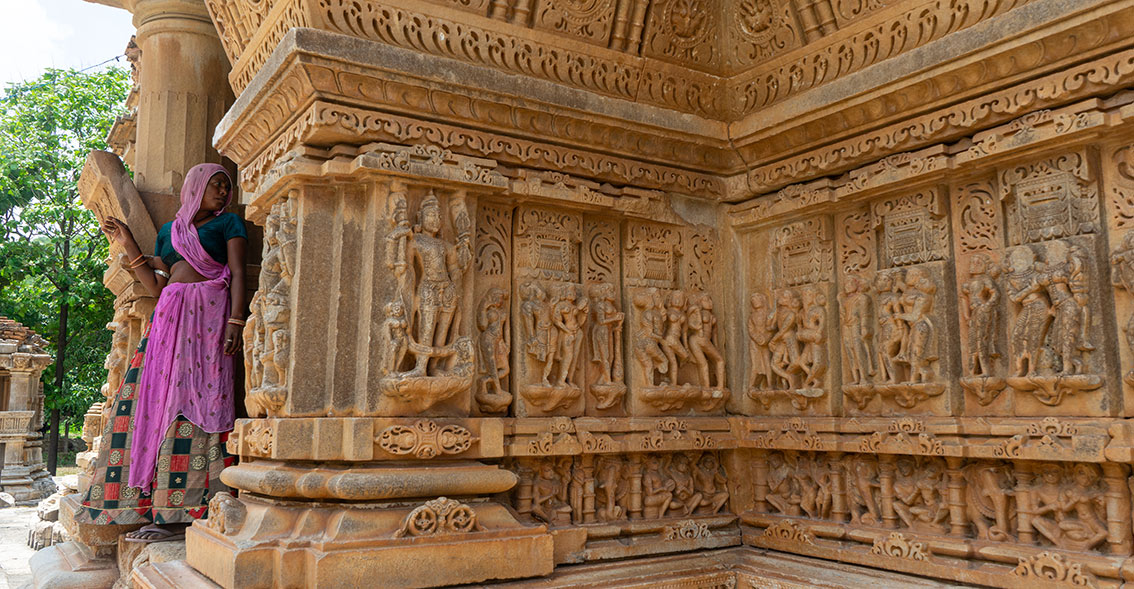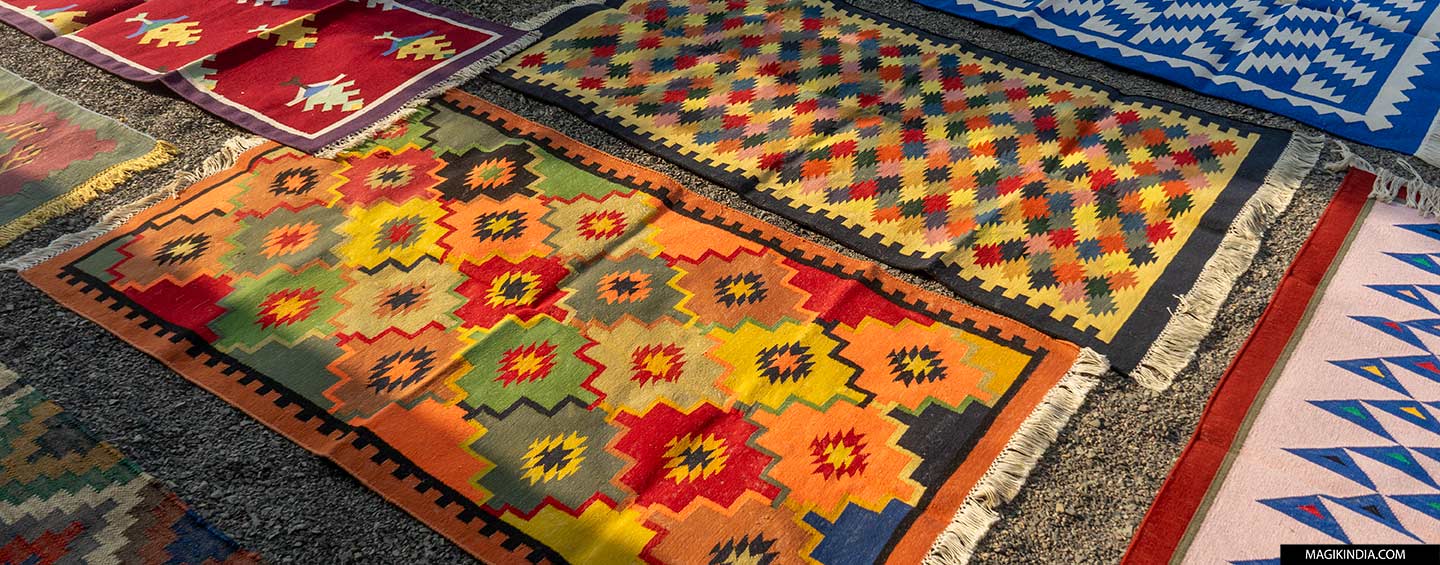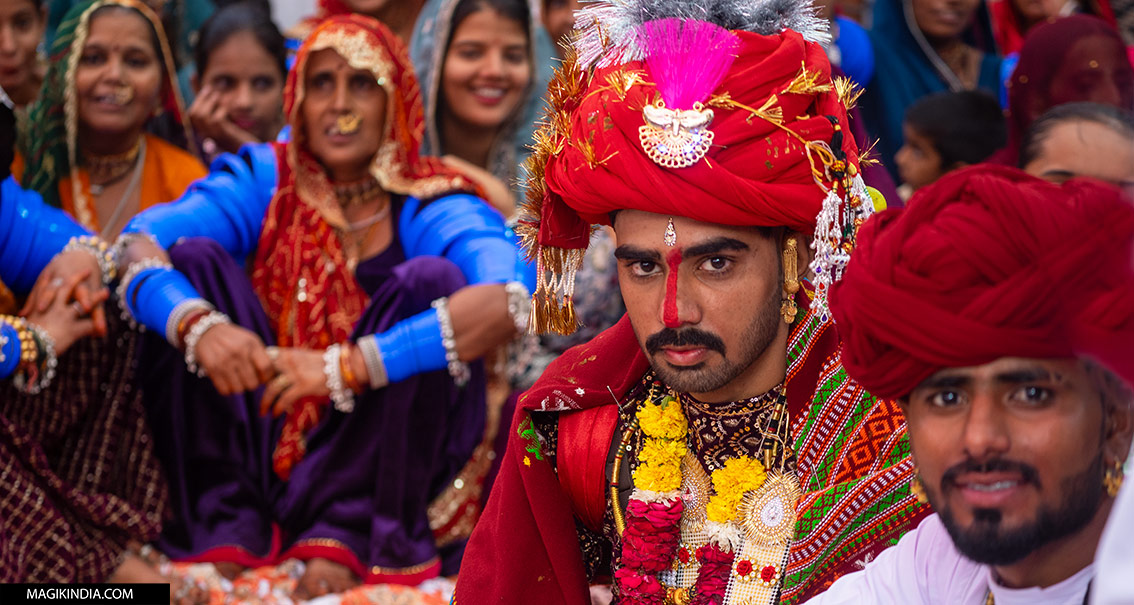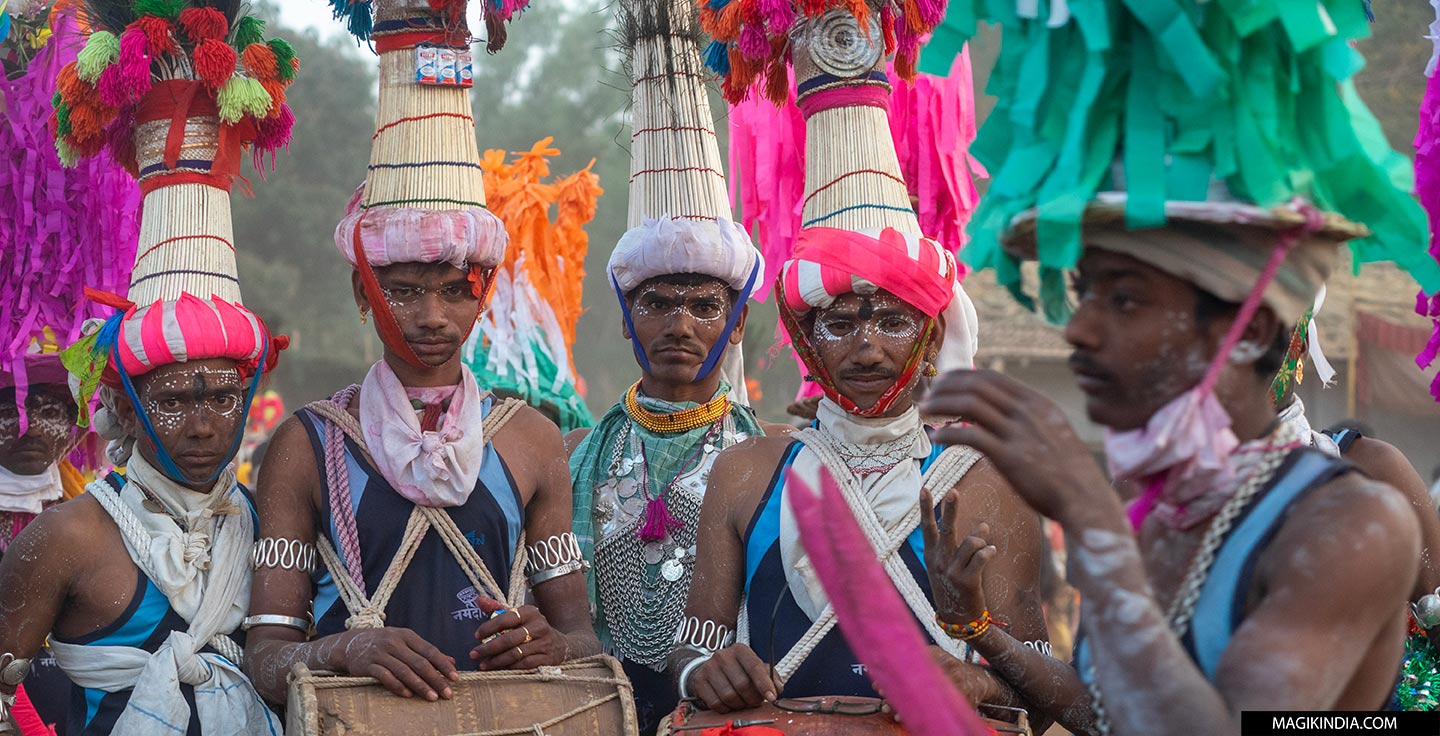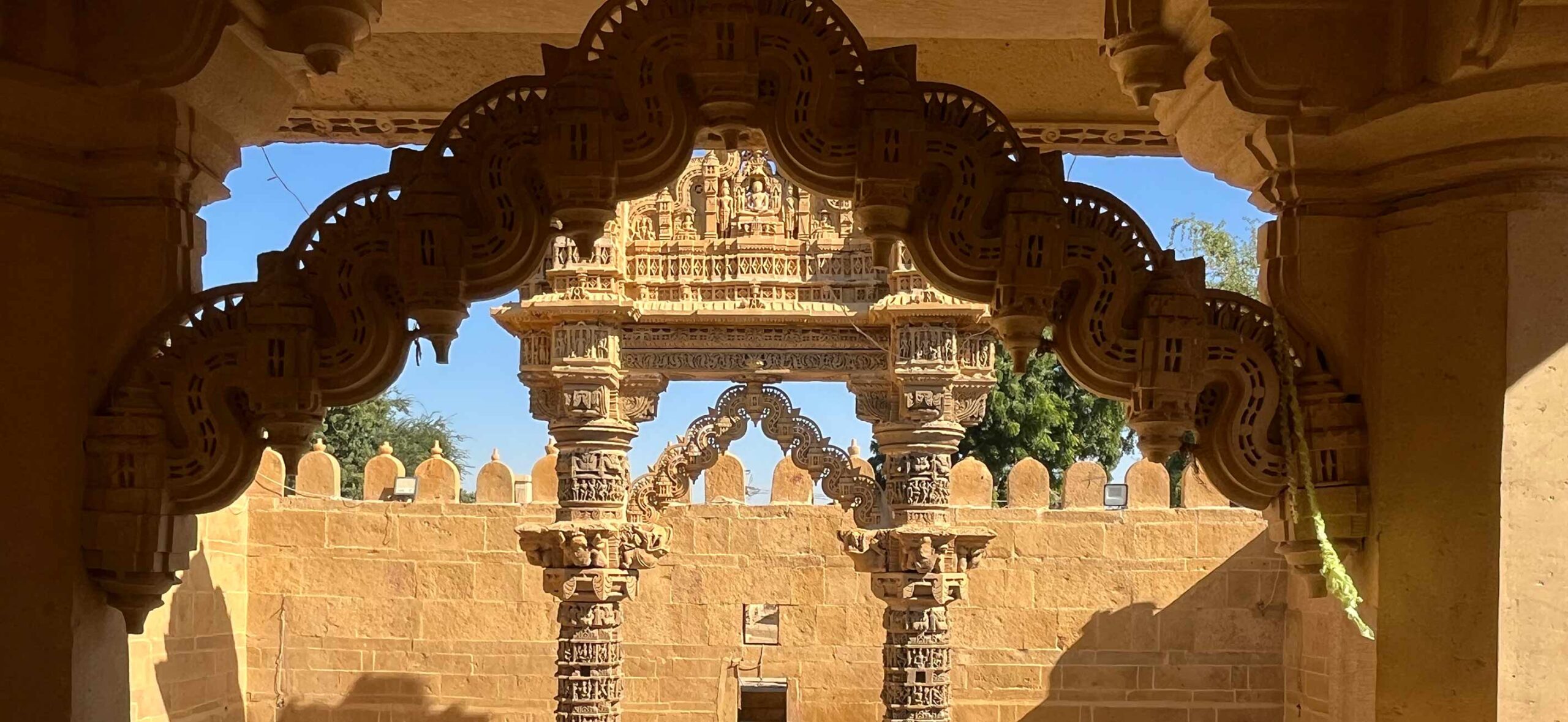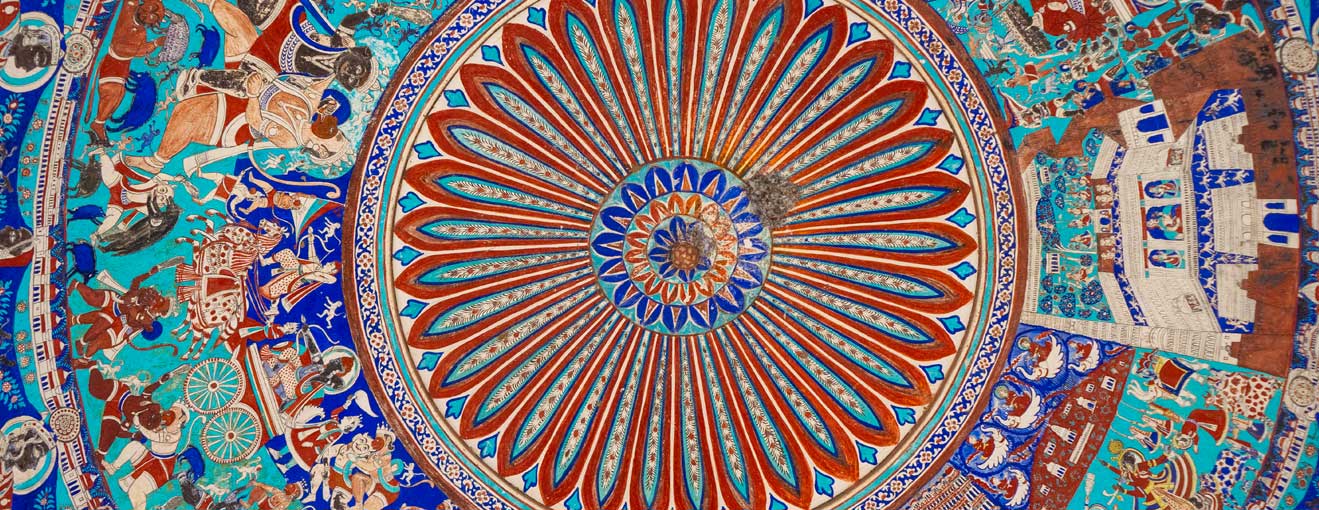
Ramgarh, the forgotten treasure of Shekhawati
If you’ve been following this blog for a while, you might know that Shekhawati is one of my favourite regions in Rajasthan. It’s a surprisingly under-visited destination despite its exceptional cultural richness. Of all the cities in Shekhawati, Ramgarh particularly caught my attention. Founded in the late 18th century by the famous Poddar family, it was one of the richest cities in India in the 19th century. This prosperity is reflected in the variety of its monuments: hundreds of palatial mansions, cenotaphs with elaborate frescoes, kua wells, and temples galore.
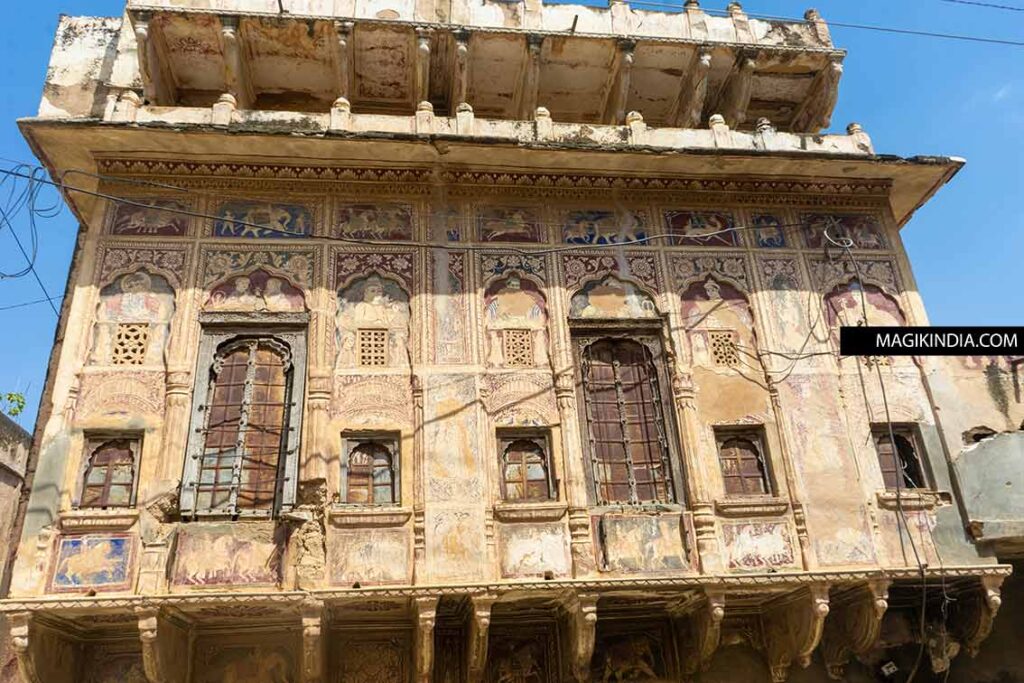
Legend has it that Ramgarh owes its existence to the queen of the Sikar kingdom, who wished to have the most prosperous city in Shekhawati. In response to her incessant requests, the Maharaja of Sikar summoned the wealthy merchants of Churu, the Poddar Seths, and asked them to settle there with seven families.
The merchants agreed on the condition that they would be granted any region they chose, that they would pay no taxes, and that they would rule the city themselves, without sitting below the king. The king agreed, and thus “Ramgarh Sethan” (the Ramgarh of the Seths), another name given to the city, was born.
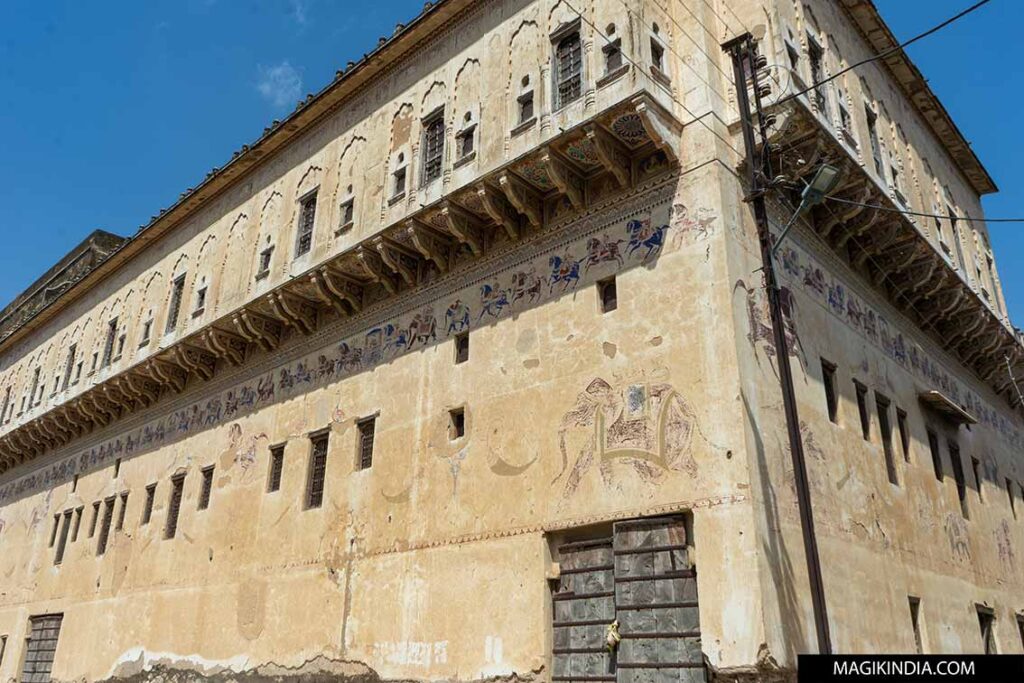
The true story is that Ramgarh was founded following a rebellion by Churu merchants against excessive taxation of commodities by the local Thakur. The Poddars, in protest, migrated to another part of Shekhawati and named their new town “Ramgarh Sethan” to differentiate it from the many other Ramgarhs in India.
Ramgarh was then the bastion of opulence and prosperity and, like Nawalgarh, was known as the richest city in India at that time.
The Seths built immense havelis (mansions), more than 200 in total, countless temples, kua wells, Dharamsalas and caravanserais for travelers.

Besides its commercial activity, Ramgarh was also known as a city of art and culture. Its center of learning of Sanskrit and the Vedas (sacred texts) earned it the title of “dooshra Varanasi,” the second Varanasi, in reference to the spiritual capital of India.
Chattris of Ramgarh
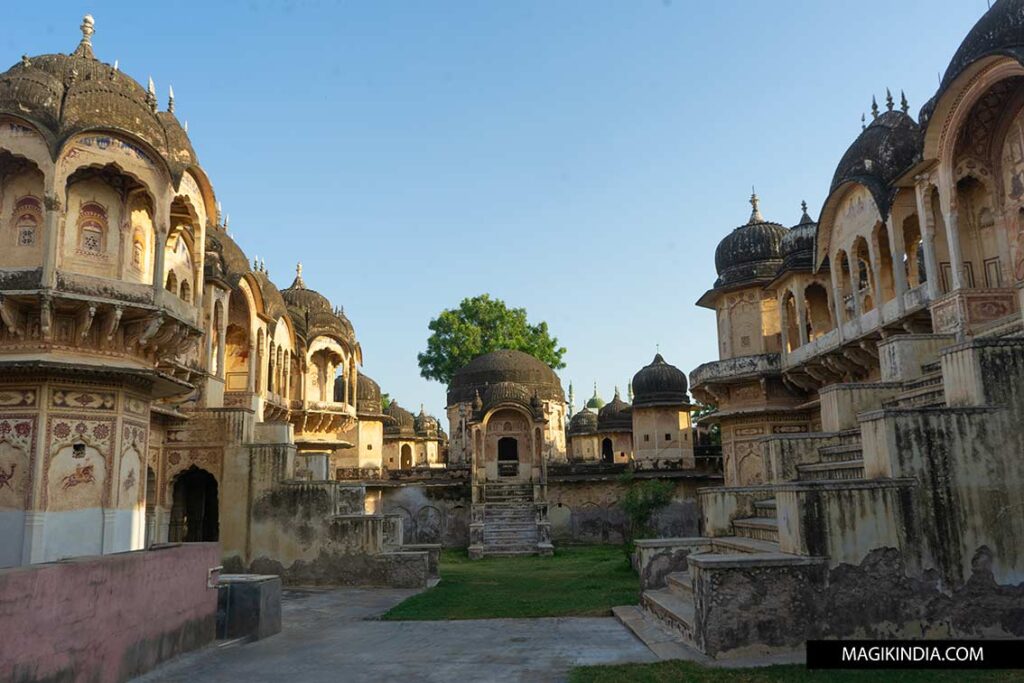
Ramgarh is especially known for its “chattris,” or cenotaphs, monuments erected in memory of the deceased. These are pavilion- or square-kiosk-shaped structures topped with domes, typical of Rajput architecture.
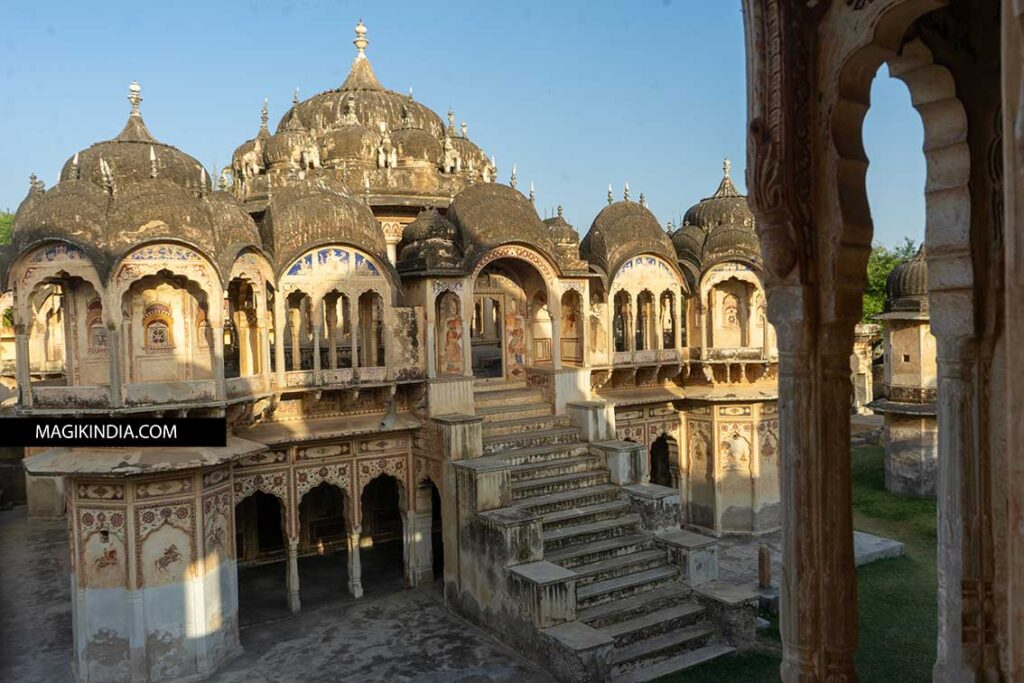
The most visited is the “Ram Gopal Poddar” complex, built in the late 1800s. It comprises a total of six structures, including four chhatris, each with a Shivaite temple. The complex is, as its name suggests, dedicated to the ancestors of the Poddar family.
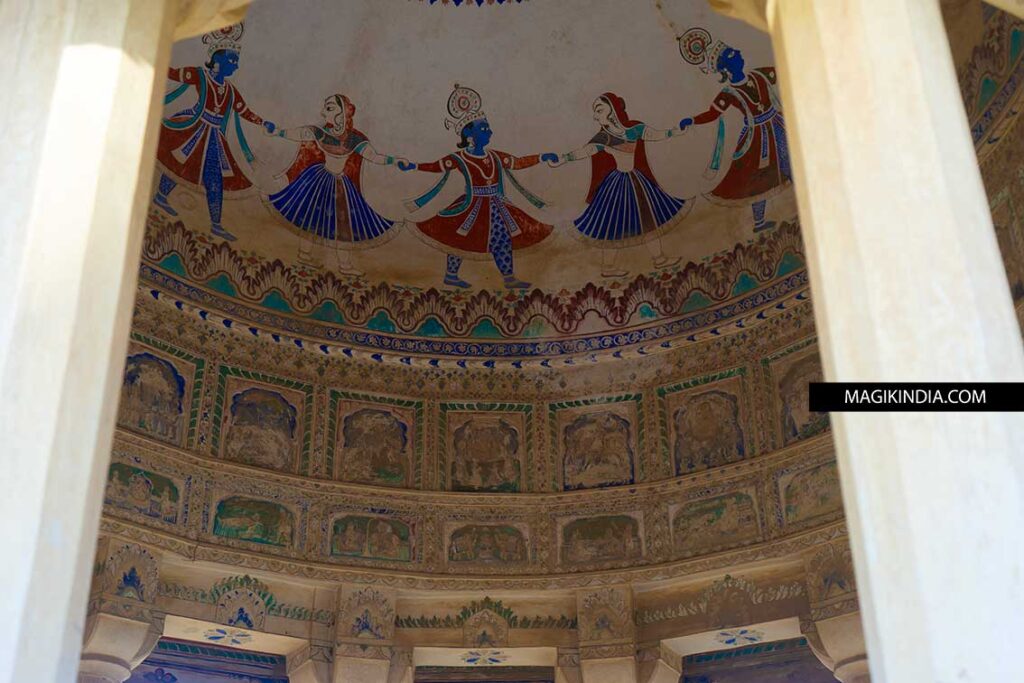
The structures feature colorful murals depicting various scenes from the life of Lord Krishna, including the “Raas Lila,” the ecstatic dance of Krishna and the gopis. Entrance to these chhatris is not public, and one must ask the caretaker (priest of the complex) for the key.

Visitors often stick to this complex without realizing that a 5-minute walk further lies the most remarkable cenotaph in Ramgarh, and I would even say, in the whole of Shekhawati.
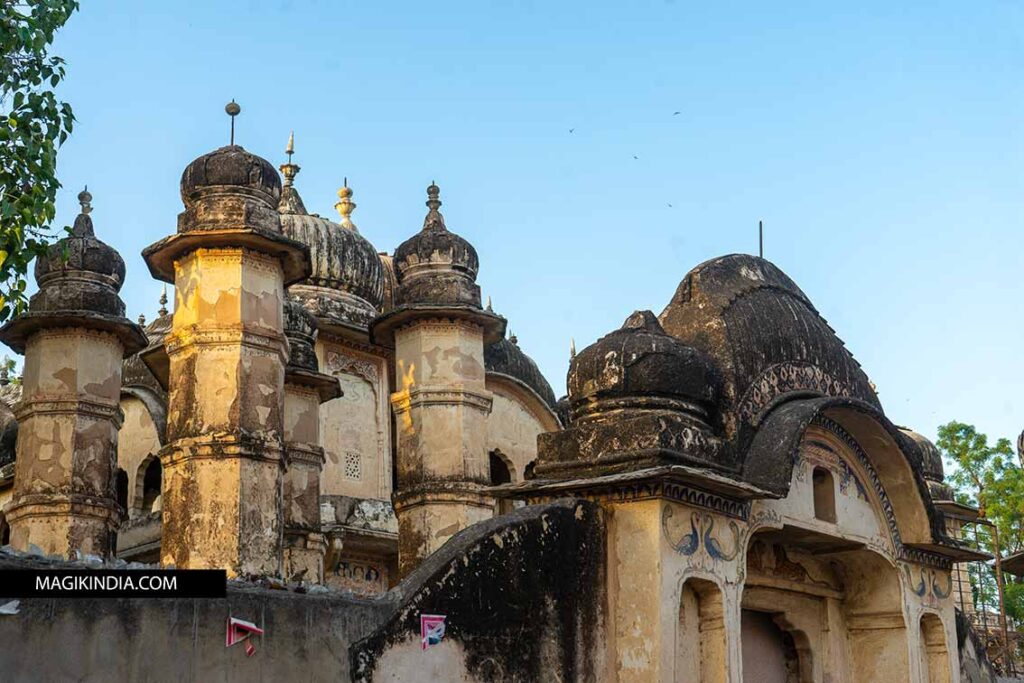
It is true that the exterior of the “Seth Gopal Chhatri” building is quite damaged and does not invite visitors. Furthermore, you must ask the caretaker for the key to enter.
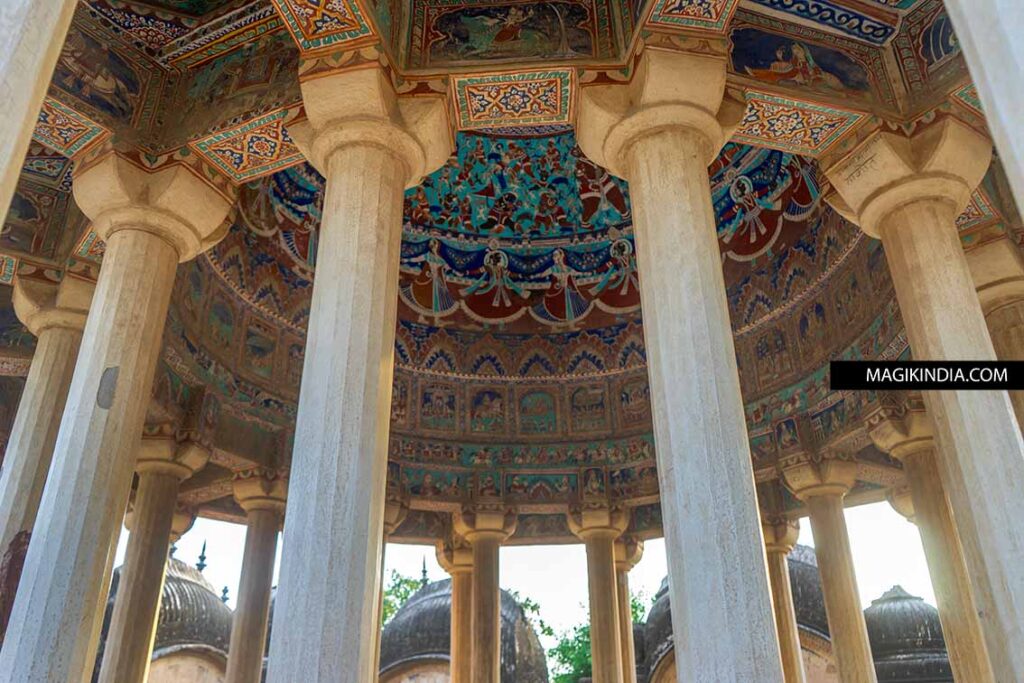
But once inside the monument, it’s a big wow! The frescoes of the cenotaph, whose main color is turquoise blue, are simply breathtaking and one could spend hours contemplating this masterpiece.
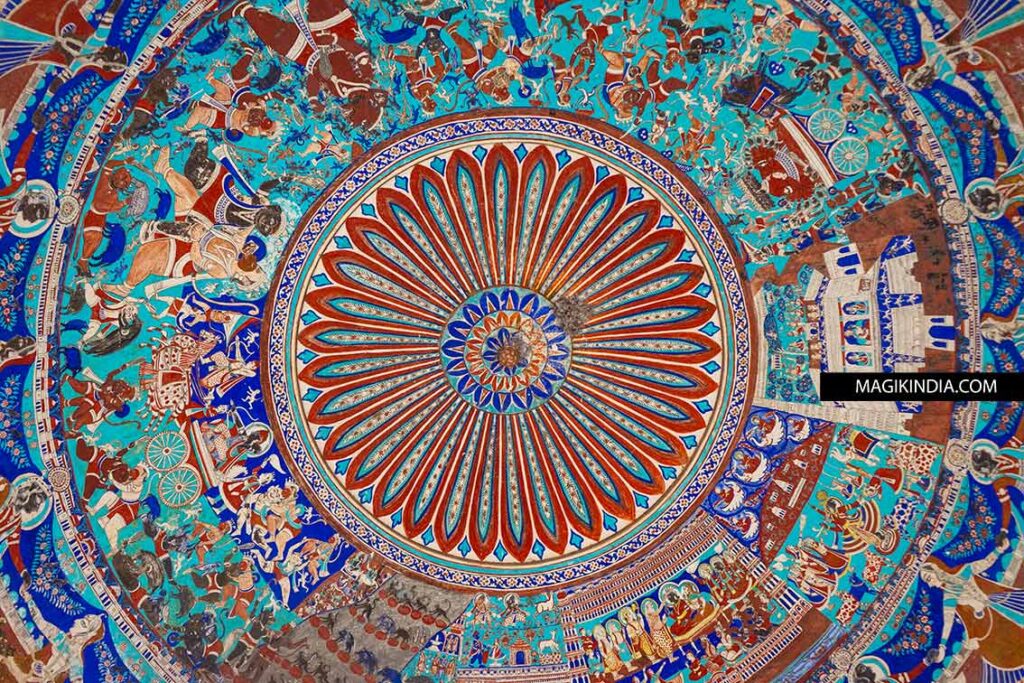
They depict the Ramayana, the famous Indian epic, in its entirety, so much so that the cenotaph is also known as “Ramayana Chhatri.” Episodes from the life of Lord Krishna can also be seen there, as in all Shekhawati paintings.
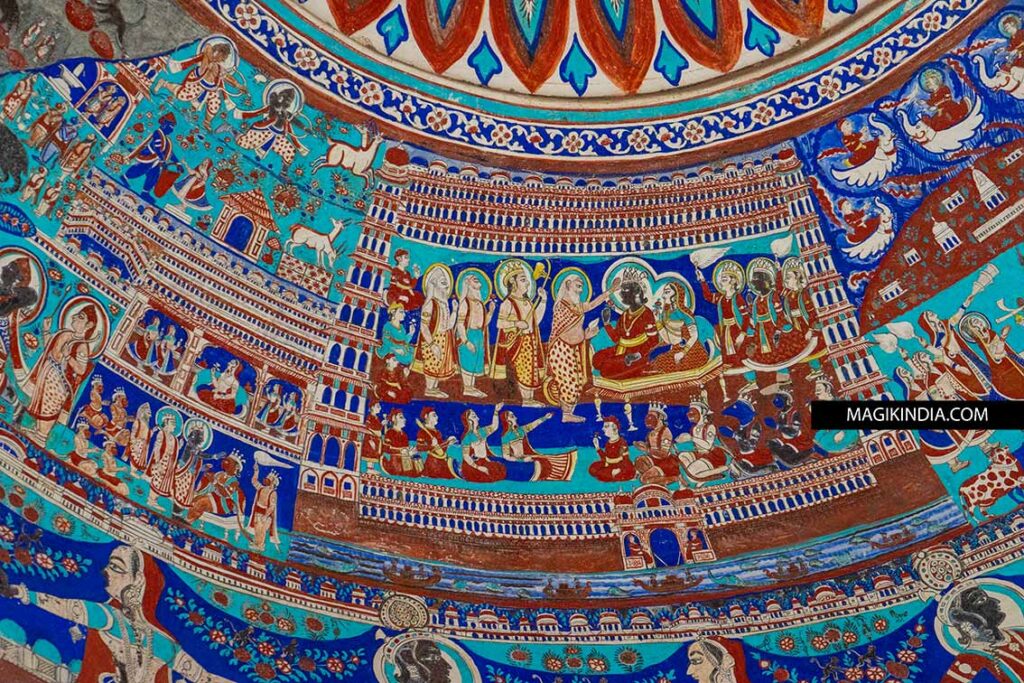
The bonus of this chhatri is its temple dedicated to Shiva, located below the building. The somber atmosphere of the sanctuary is softened by the vivid colors of the indigo-colored frescoes painted on the arches.
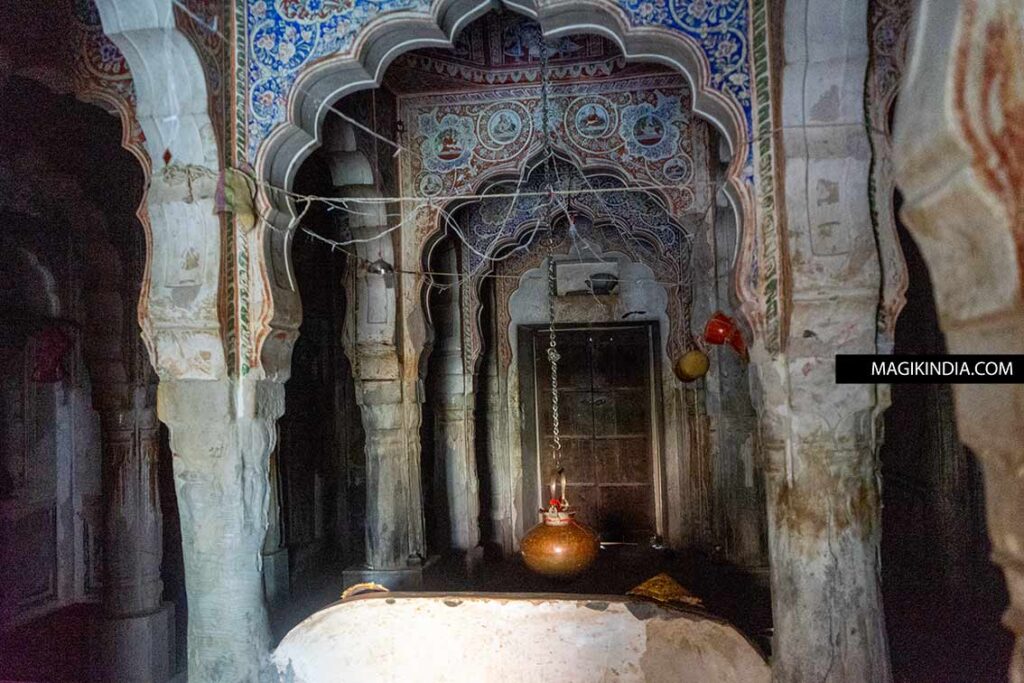
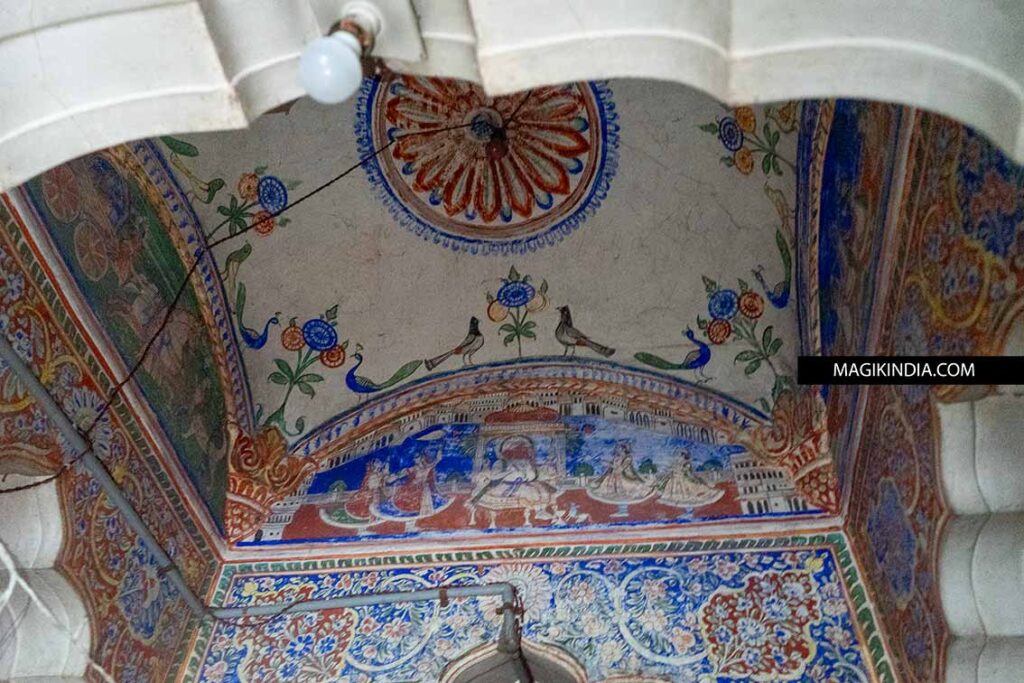
Shani temple & other visits
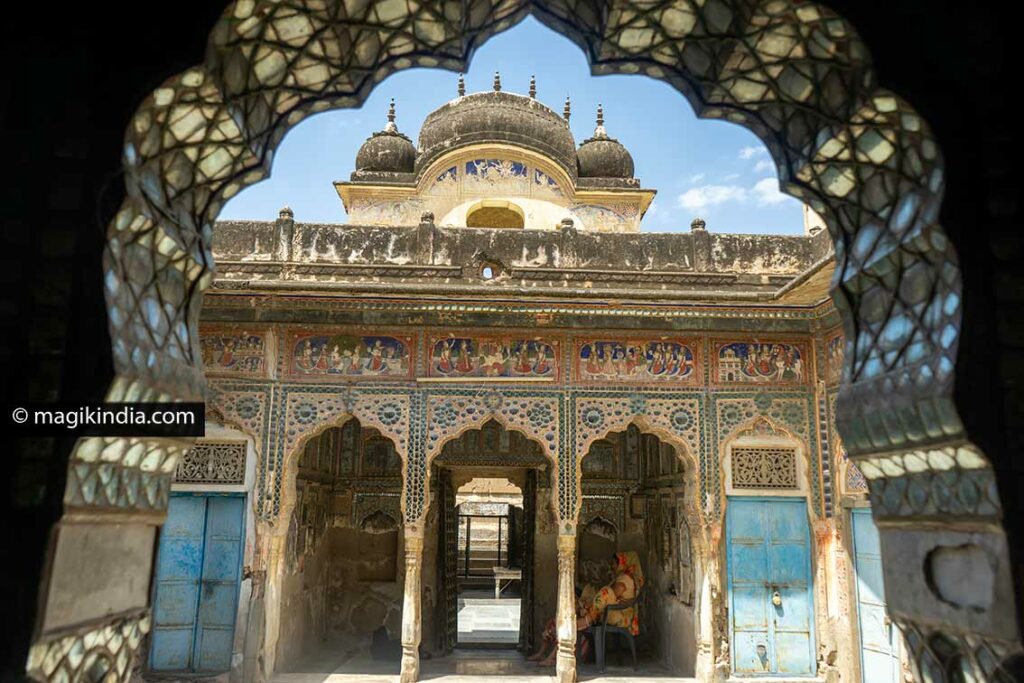
If you were to visit only one monument in Ramgarh, it would undoubtedly be the Khemka Shani Temple! Built in the mid-19th century by the wealthy Khemka merchant family, this temple is a treasure trove filled with thousands of shimmering mirrors and intricate frescoes…
KNOW MORE ABOUT THE SHANI TEMPLE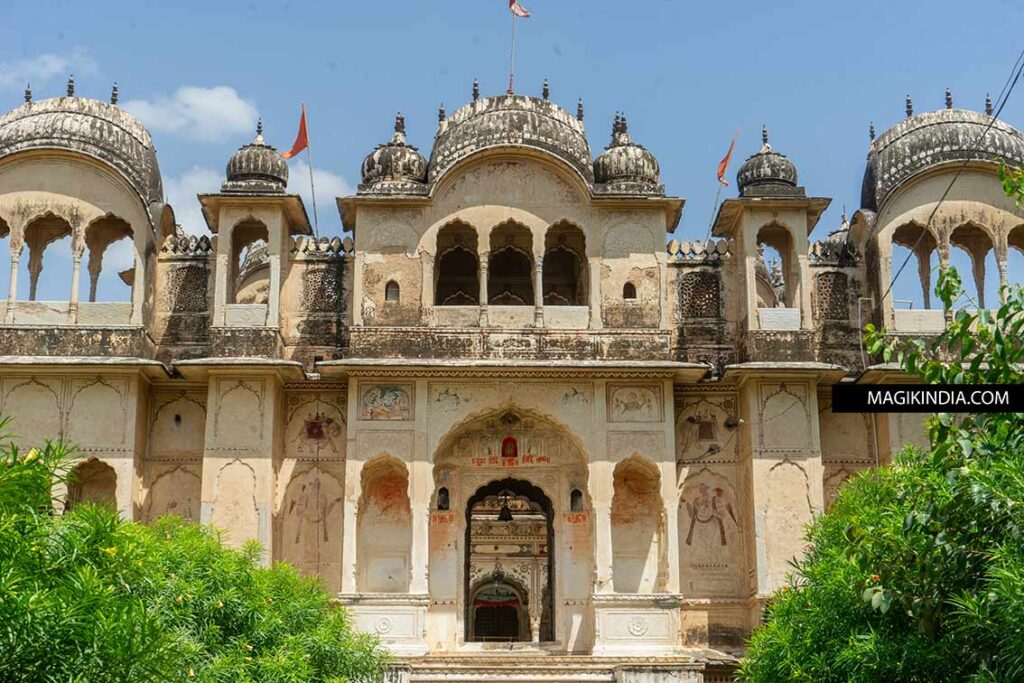
For the other temples, I would mention the Ganga one, built by the Poddars in 1845 (open only during aratis ceremonies, in the morning and evening) and especially the Lal Kua Balaji one, located not far from “Poddar Street”.
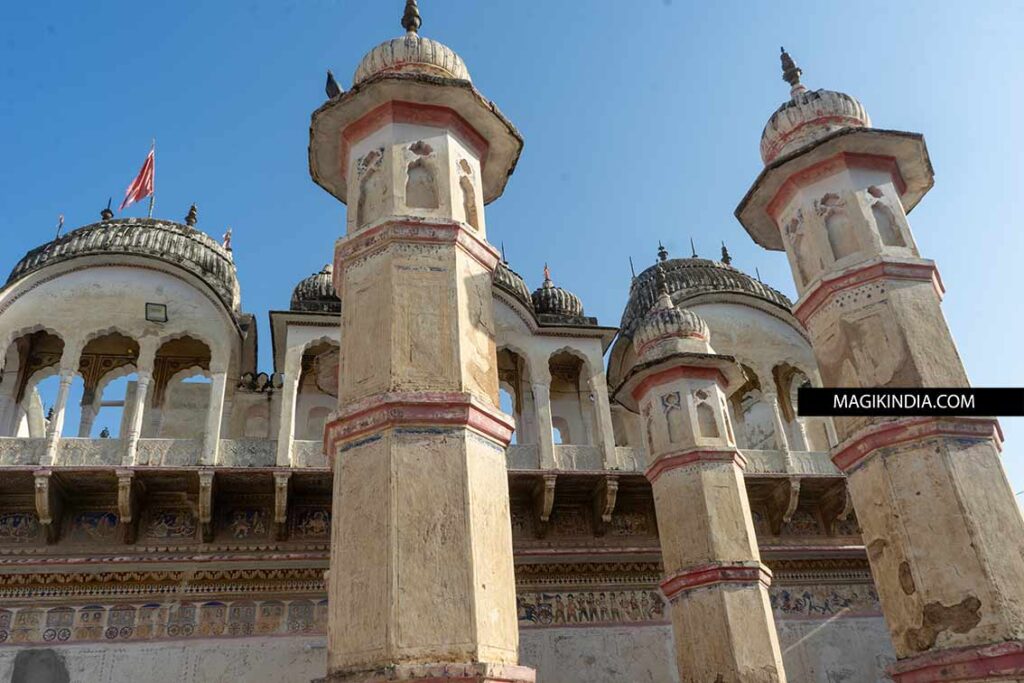
Dedicated to Hanuman, the monkey god, this temple features a magnificent “Kua“ (well) topped by four Persian-style towers, typical of the Shekhawati region.
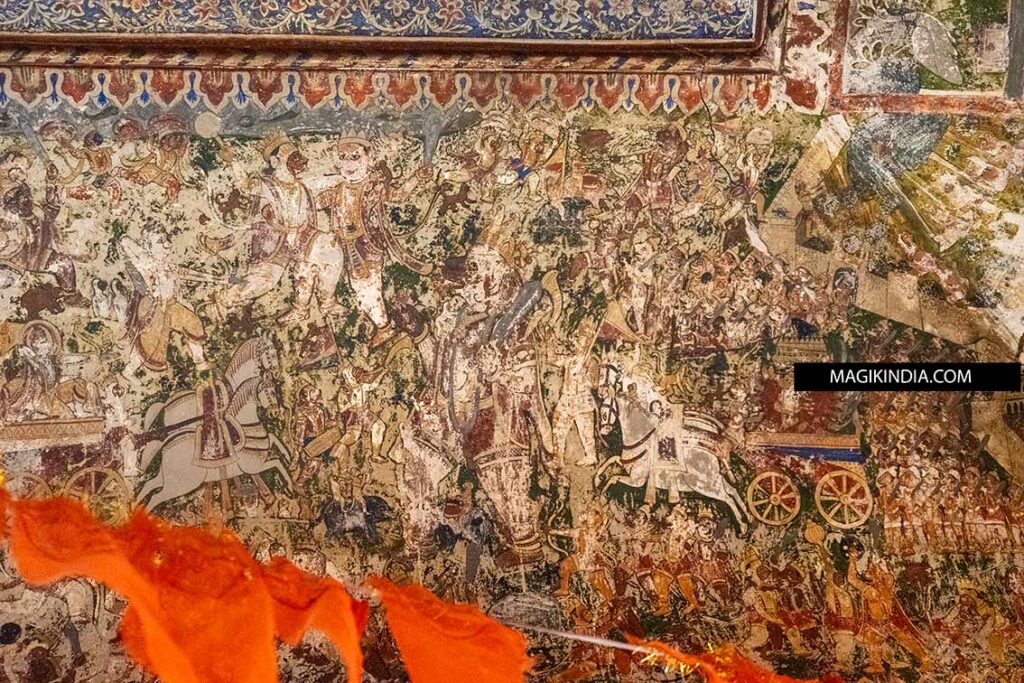
The interior reveals ancient frescoes depicting the epic Ramayana, almost erased by time. The temple’s pujari is also very welcoming, which makes the experience even better.

Ramgarh Havelis
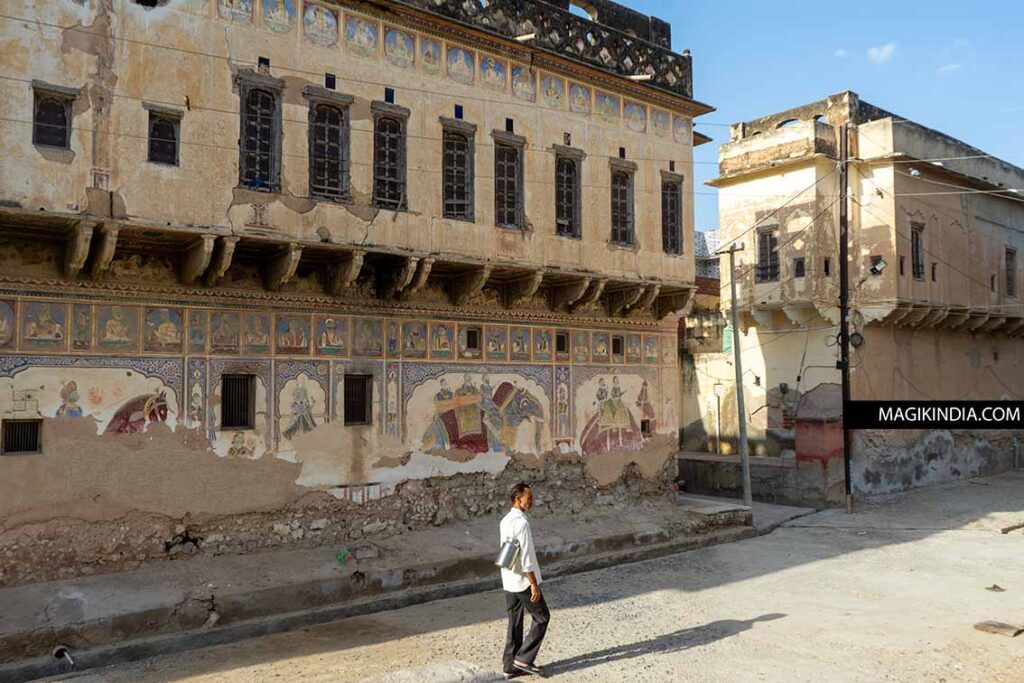
Ramgarh’s palatial mansions are concentrated on Poddar Street and Ruia Street. Many of them are in very poor condition.

The haveli of Dalsukhrai Jaydayal Poddar is one of those that stands out. Built in 1880 by the Poddars, it has the distinction of having on its eastern facade a painted rhinoceros which, however, looks more like a large black dog. The animal could almost go unnoticed if it weren’t for a sort of porthole at the back of its body, the explanation for which I haven’t found.
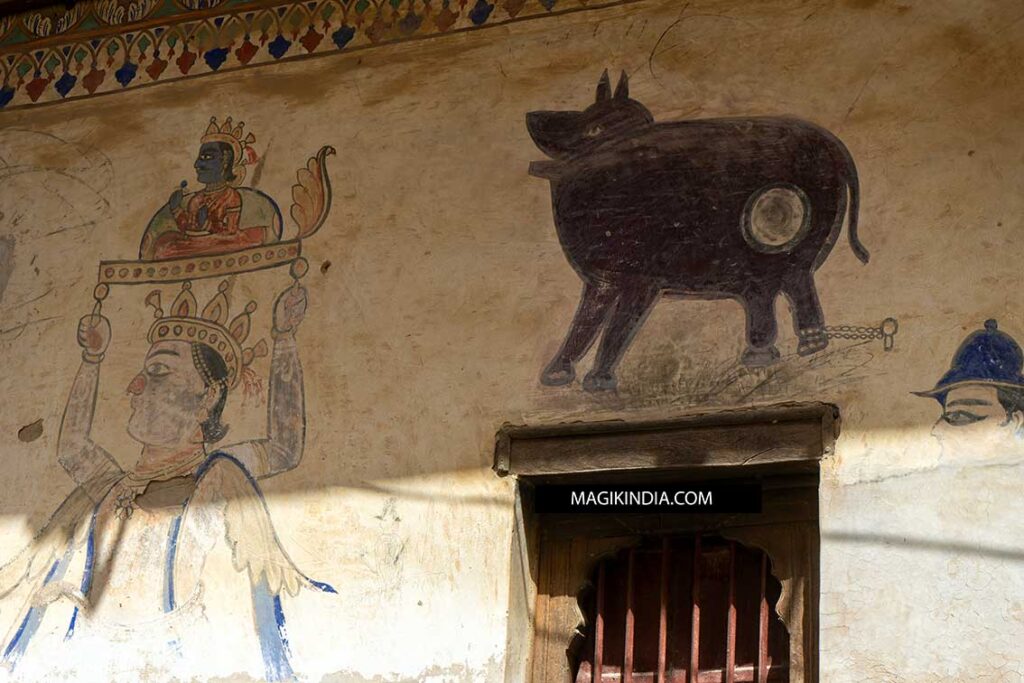
We also find the recurring motifs of the Shekhawati frescoes: horsemen, lovers from the legend of Dhola Maru and above all trains, the absolute fascination of the time.
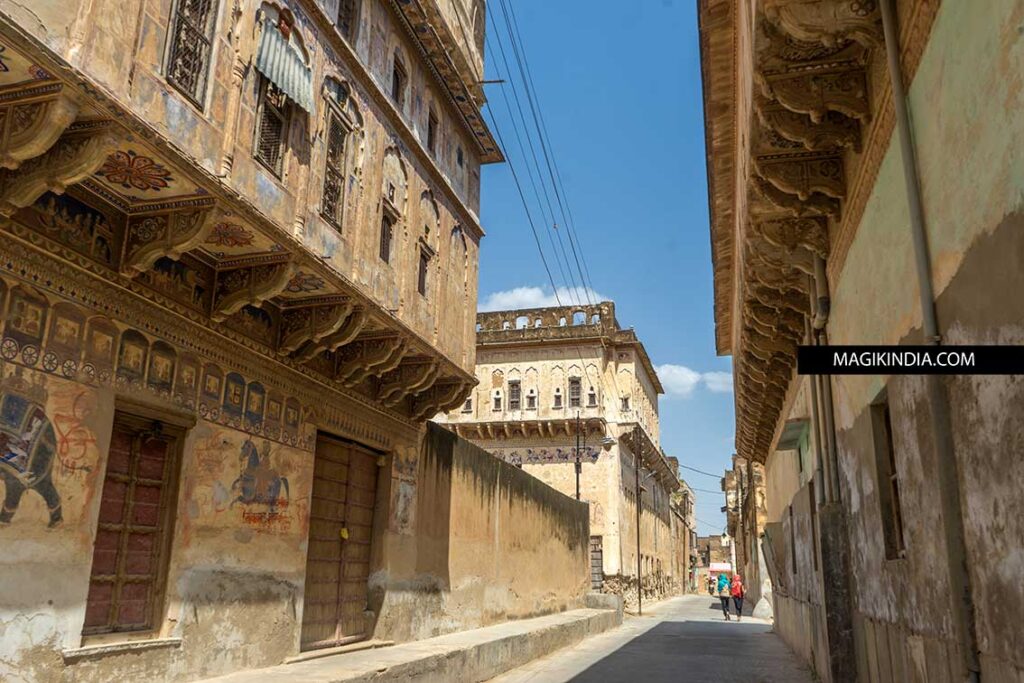
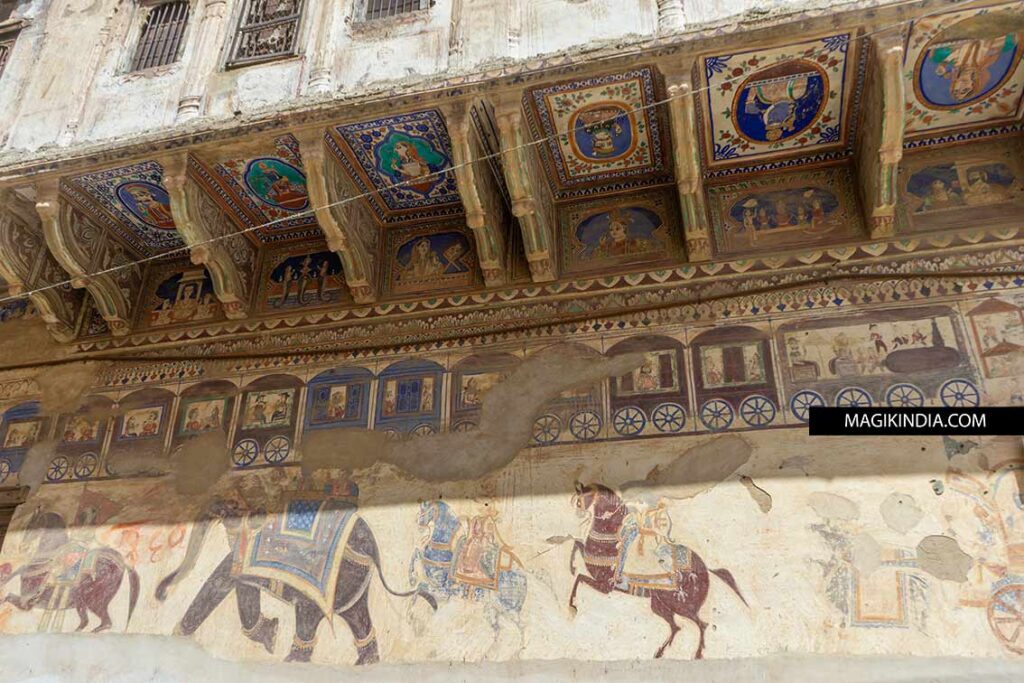
The “kuas”
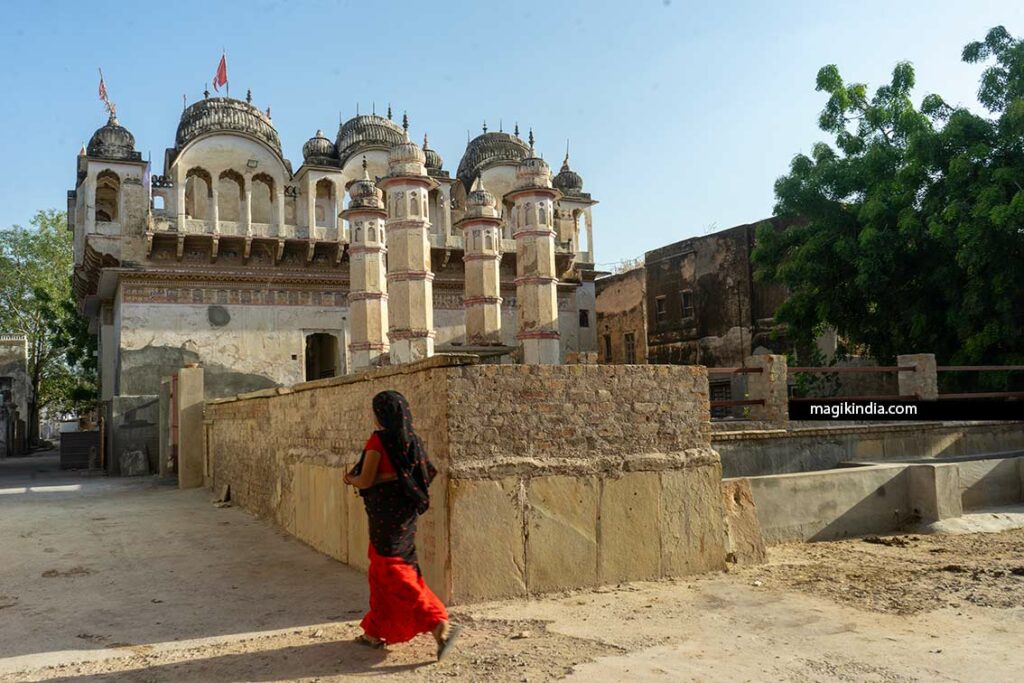
Kuas, in the local language, are the wells of Shekhawati. Surrounded by two or four minaret-style towers, they boast a unique architecture in India. Yet another good reason to visit this region!
KNOW MORE ABOUT THE KUAS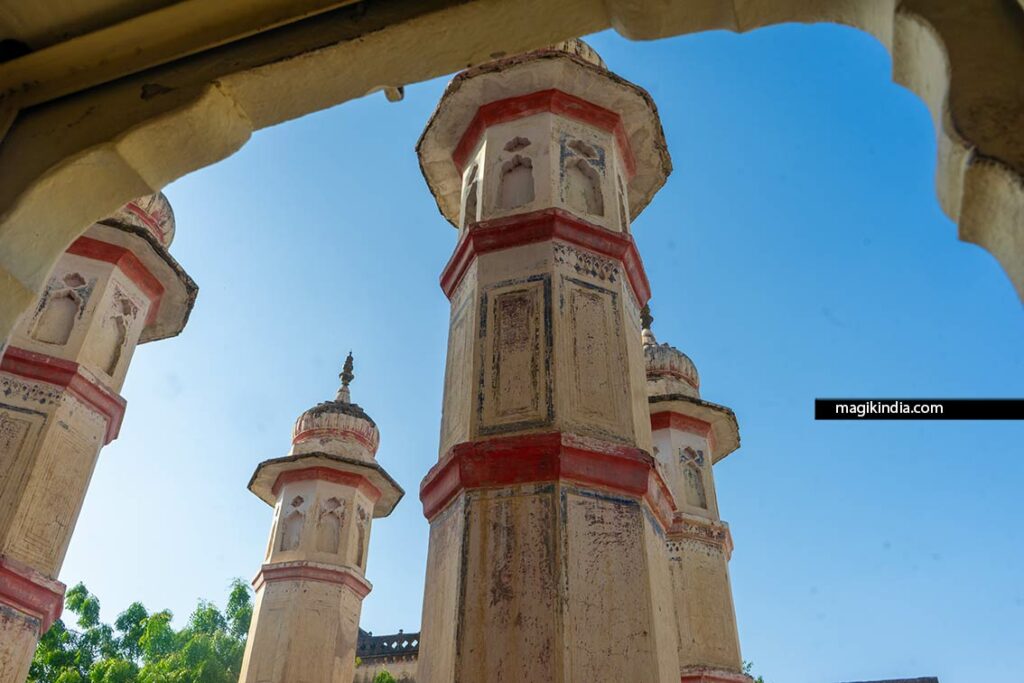
I hope this post has convinced you not to miss out on the beauty of Ramgarh and, more generally, Shekhawati during your next trip to Rajasthan. Contact us for a guided tour of the region; it’s one of our expertise!
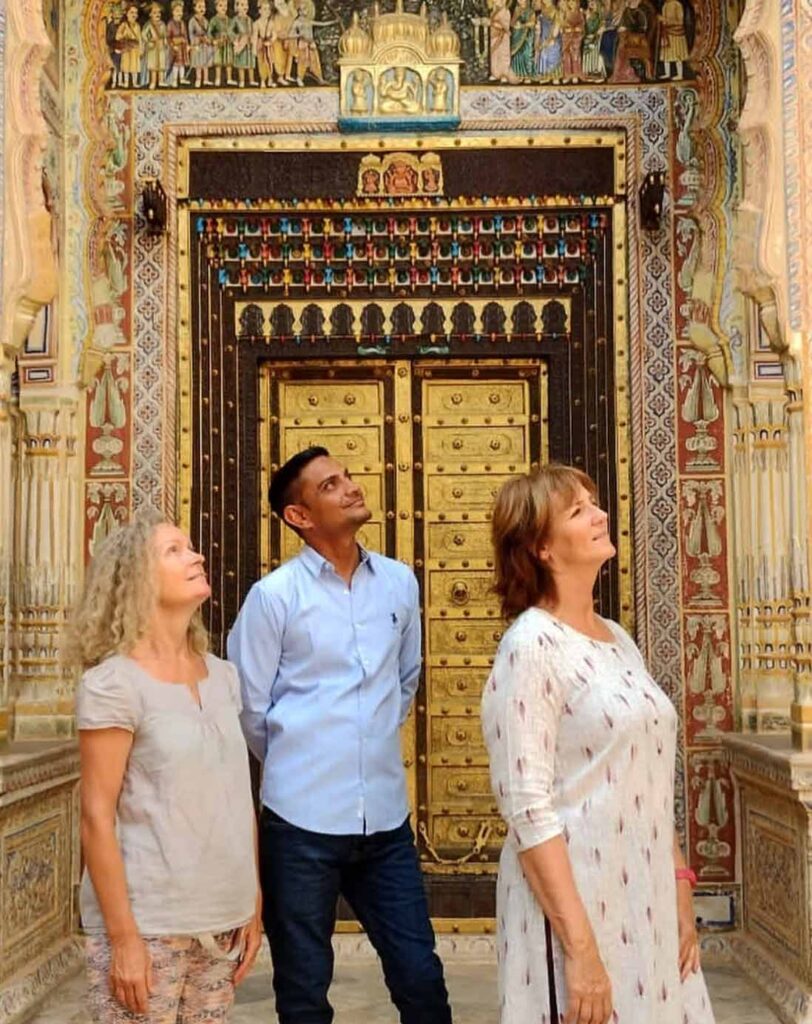
Dinesh Sharma, a native of Nawalgarh, is one of the best official cultural guides of the Shekhawati region and the co-director of MATHINI TRAVEL. With over 10 years of experience in the tourism industry, there’s no corner of Shekhawati that escapes him. He’s eager to share his passion for this unique region of India with you.
Whatsapp: +91 9509122902

